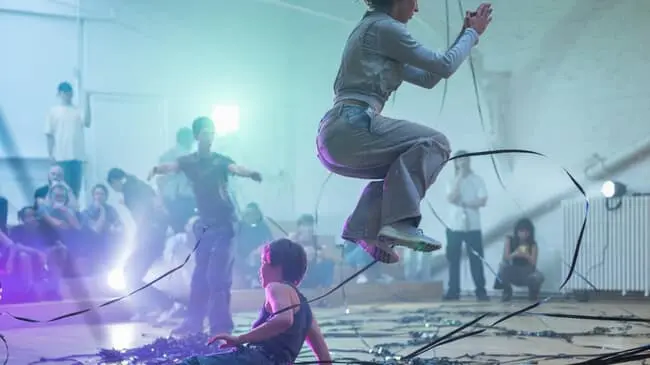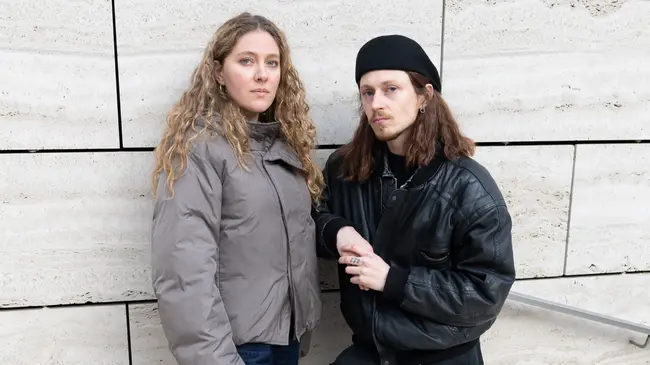Firas El Hallak

Different Class's goal is to provide young artists with the space to freely express themselves. Our commitment lies in amplifying their voices and what they stand for. Despite our will to remove ourselves from the equation when it comes to our artists’ voices, we cannot accept neutrality or take distance from the question of systematic colonial oppression. As a cultural platform, we remind our audience – whether you are an artist, a creative, or just a spectator – of the power that words hold.
We asked several creatives to share their thoughts on art, resistance and freedom. Illustrator, Sirien Salameh, painter, Ismail Mattar, artist, Firas El Hallak, musician Shadi Zaqtan, poet and co-founder of Palettes of Palestine, Hala El Mohor, photographer, Abdulazez Dukhan and art collective Tashattot - each shared their unique forms of expression regarding Palestinian freedom.
For you, what does it mean to be free?
A crucial question, particularly in the present context, which revolves around our experiences as individuals, shaped by significant titles or promises inherited or received from Europe in various ways over the years. Amidst this backdrop, we find ourselves witnessing an ongoing global tragedy, a genocide, while simultaneously observing that life continues for many around us. This stark reality underscores the fragility of our existence, creating a sense that the fabric of life can unravel unexpectedly. The grandiose concepts propagated by Europe lose their solidity and relevance. In the realm of personal freedom, my aspiration is to live without the constant fear that the very essence of existence is in question. I envision a life where I can traverse any space, at any time of my choosing, savouring the joys of life without succumbing to paranoia. True freedom, to me, involves being empowered by social forces rather than oppressed by them. The conviction lingers that none of us can truly be considered free until the collective freedom of all is realised.
In what concrete ways can the art and cultural sector effectively help with the current situation?
Given the current circumstances, those of us immersed in the arts bear a significant responsibility. We must employ our artistic mediums as tools for education, but also as instruments to heighten awareness. It is imperative that we articulate and spotlight the ongoing events, particularly considering the tendency of mainstream media and corporate art to overlook social injustices, leaving us the role of disseminating crucial information, as it goes unfulfilled.
Recognising the distortions and dehumanisation persisting in the narrative surrounding the Palestinian people and their suffering is paramount. It becomes our duty to unite and amplify the voices that have endured silence for far too long. Every artistic medium serves as a mirror to society, allowing us to observe and reflect on our struggles.
By delving into the realm of politics, artists can illuminate injustices, advocate for marginalised communities, and scrutinise established power structures. This engagement provides a platform for voices that might otherwise remain unheard.
True freedom, to me, involves being empowered by social forces rather than oppressed by them
<img class="editorial-image" src="https://cdn.prod.website-files.com/61eebcc683107b99137f4423/656f58021478bab06d8efa8e_Credit_Rubble_Firas%20El%20Hallak%202018(I%20think%20this%20one%20is%20too%20dark%20to%20print%20sadly).webp"/>
Rubble 2018 (installation) - Firas El Hallak
As an artist living in Europe, Do you think your audience and environment understand your art, and deal with your art the way you intended?
The reception of my art is significantly influenced by both the audience and the specificity inherent in each piece. I consider my personal experiences as an essential component of the diverse works I create, identifying a common thread that interconnects them throughout time. While each artwork possesses its unique qualities, there exists a cohesive element when viewing them collectively.
My intention is for my work to possess a universal appeal, making it accessible to a global audience. Nevertheless, the emotional response of the viewer is inevitably shaped by their proximity to the subjects portrayed in my art. My artistic themes typically centre around spaces, remnants of spaces, cities or the residues left by cities. Reflecting on the concept of death and what remains, I find a personal inclination to revive or immortalise what has been left behind. Reflecting on my presence in Europe, I find it to be an unconventional aspect not entirely within my control. Despite having chosen to come here, I perceive myself as being in a state of exile.
The emotional response of the viewer is inevitably shaped by their proximity to the subjects portrayed in my art
And does the meaning of your art change according to where it is being consumed?
I've consistently appreciated the term ’consumed’ because I advocate for active spectatorship. I reject the notion of passive engagement, as seen in practices like ’Netflix and chill’ or binge-watching. When I consider the idea of art being consumed, it conjures an image of a sophisticated dog longing for a treat, unable to consume it but ardently gazing at it with a sense of urgency. Moving a piece from its original context can alter its essence, potentially giving rise to a new meaning as it becomes an extension of its new surroundings.
An artwork, poem, music, or photo you want us to look at/learn more about today?
Given the current circumstances and building upon our discussion about the impact of artists, my thoughts are drawn to Naji El Ali's Handala and the compelling narrative surrounding Naji El Ali himself. His influence was profound, and tragically, the artist was assassinated for political reasons. The story of Naji El Ali underscores the potential for art to serve as a formidable force, capable of inspiring change and posing a threat to established political norms.
Naji El Ali created Handala in the early 1970s, Handala is a Palestinian caricature. The character is a faceless young boy who became a symbol of Palestinian resistance and resilience. Handala is known for standing with his back to the viewer, with his hands clasped behind his back. He often appears as a witness to the events taking place in his surroundings.
The name ’Handala’ is derived from the Arabic word ’Handal,’ which refers to a type of plant that grows in rocky areas. The question remains, when will Handala turn around?
<img class="editorial-image" src="https://cdn.prod.website-files.com/61eebcc683107b99137f4423/656f627f38dd9f7f7dd8805e_Handala-0000.webp"/>
Your works 'Where we were,' 'The Dome,' and 'Ruin in Ruin,' or 'Mario, I'm bored. Aren't you bored?' have an archival quality to them. They seem to document your own heritage and history in one way or another. Why do you think you incorporated archival elements into your work?
I envision myself in a perpetual quest to rescue narratives that are on the verge of slipping away, needing to be apprehended before they shatter. Simultaneously, I actively seek out fragmented stories and engage with their remnants, akin to a collective memory filled with narratives lacking clear beginnings or endings—continuous happenings that persist. The archival quality in my work emerges from a deep-seated drive to preserve, to secure, to ensure the enduring presence of these stories—a tendency intrinsic to our human nature.
When will Handala turn around?
My work allows me to explore the natural course of history, contemplating the gradual transformation of all things into rubble over time. The incorporation of oral accounts is a reflection on the decay of the present, prompting an examination of how narratives of present glory may fade into obscurity in the future. In essence, the archival elements in my work serve as a testament to the intrinsic human instinct to safeguard and immortalise the stories that shape our heritage and history. Also, I admire individuals who safeguard their narratives with the same fervour as they protect their homeland or loved ones. Stories, to me, are cherished companions that I am determined not to lose.
Do you think art can be nonpolitical?
Certainly not. In my perspective, everything is political. It's an intriguing contrast I often notice when engaging with European artists who discuss art in terms of non-political realms, such as beauty, self-expression or non-objective art, forgetting that these pursuits are privileges.
It strikes me as peculiar how artists in this context can feel detached from politics, as if everything happening is not affecting them directly.
<div class="editorial-banner"> <div class=“editorial-credits”> @firaselhallak / @splinter.vzw <br/> Donate now to Medical Aid Palestine or to the Palestine children's relief fund to address urgent humanitarian needs in Palestine. Or learn more at Decolonize Palestine. <br/> map.org.uk </div></div>
Different Class works with the interest of their community at heart.
Our work’s purpose is to foster a solid network for independent artists, those who love them, and those who want to support them. Become a member to contribute to the local Belgian art scene.






